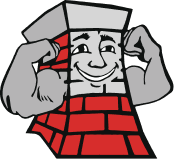Choosing the Fuel Type for Your Next Hearth Appliance
 Fireplaces and stoves undeniably add character to a home. Just as important as the style and design of these popular appliances is the source of heat. Considering the pros and cons of the most common heat sources for fireplaces and stoves can lead to making the right choice and finding greater enjoyment for your home and family. The following are the heat sources most widely used: Wood, gas, electricity, pellets, and coal.
Fireplaces and stoves undeniably add character to a home. Just as important as the style and design of these popular appliances is the source of heat. Considering the pros and cons of the most common heat sources for fireplaces and stoves can lead to making the right choice and finding greater enjoyment for your home and family. The following are the heat sources most widely used: Wood, gas, electricity, pellets, and coal.
Wood
The leading heat sources for fireplaces and stoves are wood and gas. As a renewable resource that is carbon neutral, wood is an eco-friendly choice. Wood produces crackling, robust blazes. If a fireplace insert is used, heating costs can be cut by about 30% in winter. As long as the chimney is operating properly and the firewood is properly seasoned, wood fires are simple to start. An element of inconvenience comes in with regard to chopping or buying, hauling, and stacking the wood. The final step is lugging the firewood into your home, and the logs could be housing various insects and other critters.
Gas
 Gas is an increasingly popular fuel type for fireplaces and stoves. The advantage most enjoyed by homeowners is convenience. Gas heating appliances can be started and adjusted with a switch, thermostat, or remote control. Gas fireplaces & stoves provide a mix of convective and radiant heat. Zone heating is a benefit that gas fireplaces can provide. Turn off the central heating unit and use the gas fireplace in only the room you’re in, as a strategy for lowering your electricity bill. Possibilities for placement of the gas appliances may be partly determined by proximity to the gas line from an outside tank.
Gas is an increasingly popular fuel type for fireplaces and stoves. The advantage most enjoyed by homeowners is convenience. Gas heating appliances can be started and adjusted with a switch, thermostat, or remote control. Gas fireplaces & stoves provide a mix of convective and radiant heat. Zone heating is a benefit that gas fireplaces can provide. Turn off the central heating unit and use the gas fireplace in only the room you’re in, as a strategy for lowering your electricity bill. Possibilities for placement of the gas appliances may be partly determined by proximity to the gas line from an outside tank.
Electricity
Electric fireplaces are ideal for homeowners who aren’t interested in having a real fire. Electricity is a reliable energy source. When you use an electric fireplace or stove, there is no need to obtain firewood or a gas line. Heat similar to standard electric heat is produced, complete with a faux fire in the firebox.
Pellets
 Pellet stoves and pellet fireplace inserts have been continually growing in popularity. These ingenious appliances burn bio-mass fuel. The pellets used are made with sawdust and other wood by-products that would otherwise go into the trash heap. The highly compacted pellets are fed into a burn pot and create intense blazes. The fires may not be as pretty as typical wood fires, but they can burn for up to 36 hours with virtually no need for tending. The length of time a pellet stove provides heat unattended depends on:
Pellet stoves and pellet fireplace inserts have been continually growing in popularity. These ingenious appliances burn bio-mass fuel. The pellets used are made with sawdust and other wood by-products that would otherwise go into the trash heap. The highly compacted pellets are fed into a burn pot and create intense blazes. The fires may not be as pretty as typical wood fires, but they can burn for up to 36 hours with virtually no need for tending. The length of time a pellet stove provides heat unattended depends on:
- The size of the appliance,
- The capacity of the hopper that feeds pellets into the burn pot, and
- The rate at which the hopper feeds pellets into the fire.
Pellets come in 40-pound bags and can be neatly and conveniently stacked. One possible hindrance is that pellets may not be readily available where you live.
Coal
Coal-burning fireplaces and stoves are also available, though they are not nearly as popular as wood or gas. Coal is a less expensive fuel, and coal fires can provide heat for up to 24 hours. The coal produces strong, steady blue flames with an ambient glow. The fuel must be protected from moisture. For the average home, a 4’ by 4’ by 8’ stack of coal is enough for the cold months of winter.
Contact our chimney professionals today for more information about the different hearth fuel types available.
Northeastern Chimney, Inc.
37 Cody Street, West Hartford, CT 06110
Phone: 860-233-5770


